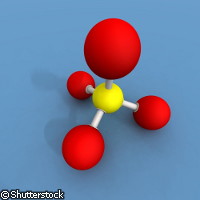Researchers unlock mystery of sulphuric acid concentration in atmosphere
Groundbreaking research from Europe and the US shows how sulphuric acid and water react at fast enough rates to explain the high concentration of sulphuric acid in the atmosphere. The study's findings are part of the EUCARRI ('European integrated project on aerosol cloud climate and air quality interactions') project, funded under the 'Sustainable development, global change and ecosystems' Thematic area of the EU's Sixth Framework Programme (FP6) to the tune of EUR 10 million. The results are published in the journal Science. The scientists from the Czech Republic, Finland, Germany, Sweden and the US said their findings could have implications for global climate modelling, effectively giving researchers the means to assuage any doubts related to what impact aerosols have on their predictions. These findings have been a long time coming; researchers have tried incessantly to reconcile atmospheric concentrations of sulphuric acid with results obtained in laboratory tests on particle formation rates. Mikko Sipilä of the Department of Physics at the University of Helsinki in Finland pointed out that the methods he and his colleagues developed can detect particles that are just about bigger than a single nanometre. Past attempts failed because the particle detectors used were not up to par; they were only able to detect particles of 3 nanometres and above. According to Mr Sipilä, sulphuric acid particles formed by H2SO4 gas grow at a snail's pace when they are at concentrations below 108 molecules per cubic centimetre. 'This means that within the residence times used in previous studies - some 10 seconds typically - the particles cannot grow above the detection limit of the particle counters they have been using,' the Finnish researcher was quoted as saying. Thanks to their new and improved detection methods, the researchers successfully demonstrated that the difference of a number of orders of magnitude between observed and theoretical growth rates is basically non-existent. They noted that despite the fact that the growth rate found does not fully match predictions from theory, the 'agreement is good'. Based on the theory of nucleation, particles such as sulphuric acid become stable as condensation kicks in. In a nutshell, nucleation is a physical reaction that occurs when components in a solution begin to precipitate out, forming nuclei which attract more precipitate. Replication of the study's results could play a critical role in climate science, according to the researchers. Mr Sipilä pointed out that indirect effects of aerosols are not greatly understood in climate models. 'Currently, I think that in those models that are used for the [Intergovernmental Panel on Climate Change] report, the nucleation is either neglected completely or it's somehow based on ambient observations,' he said. 'If the detailed molecular steps are not known, it creates lots of uncertainty in these models. That's why it's very important to understand the detailed steps as this would then enhance the accuracy of global climate predictions.' Also contributing to this study were researchers from Leibniz-Institut für Troposphärenforschung e.V. in Germany, the Institute of Chemical Process Fundamentals of the Academy of Sciences of the Czech Republic, the Helsinki Institute of Physics and the Finnish Meteorological Institute, Stockholm University in Sweden and the National Center for Atmospheric Research in the US.
Countries
Czechia, Germany, Finland, Sweden, United States



